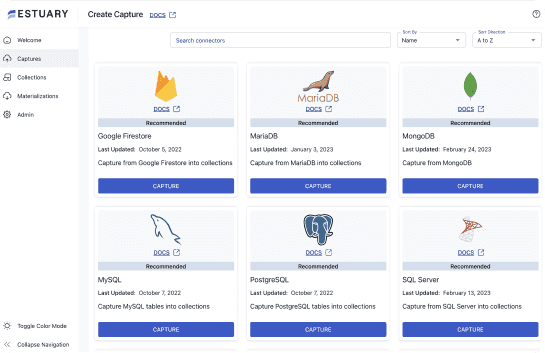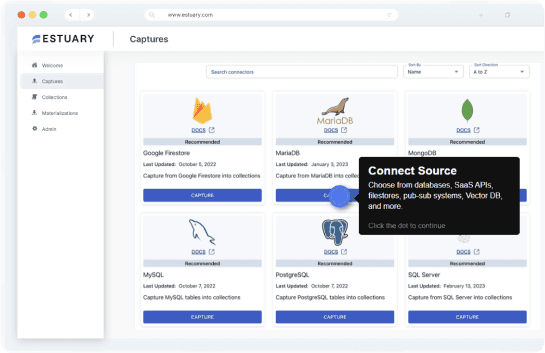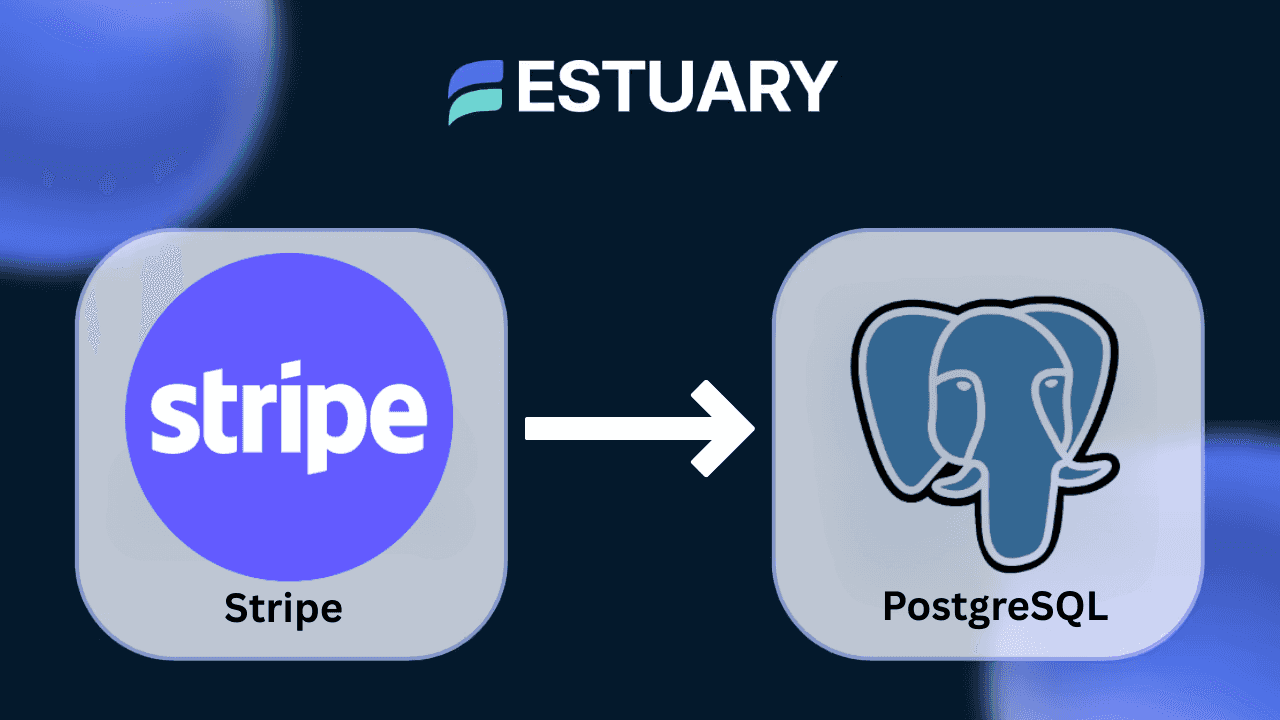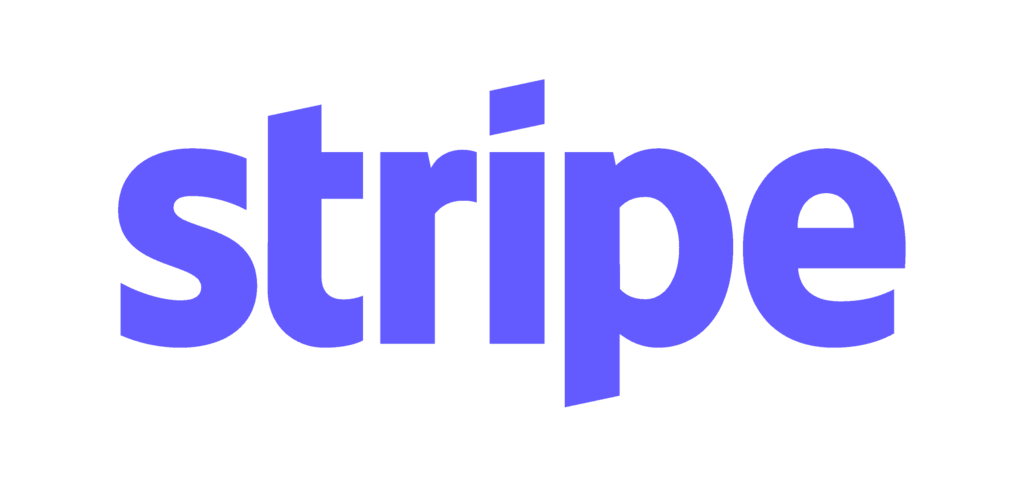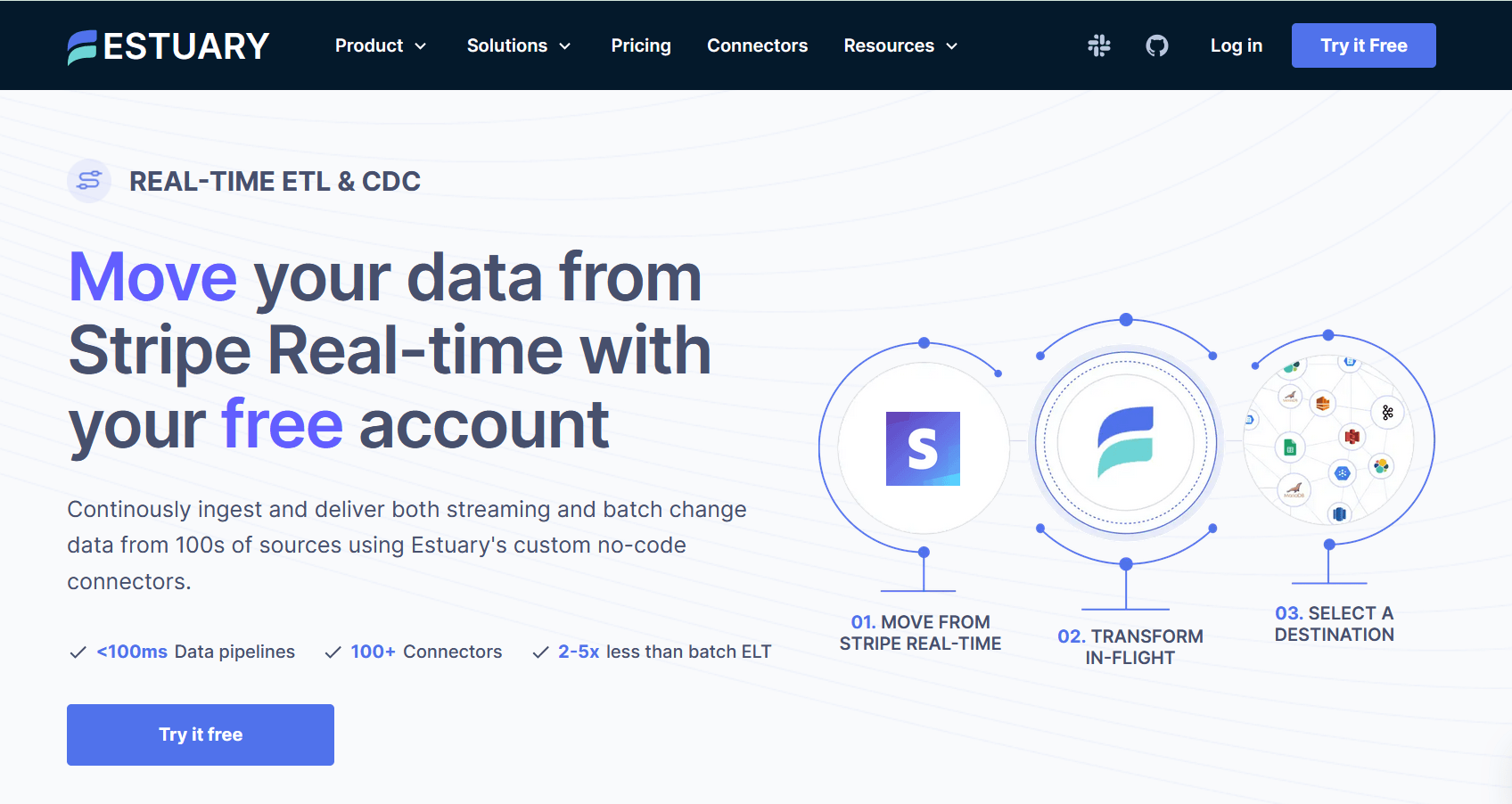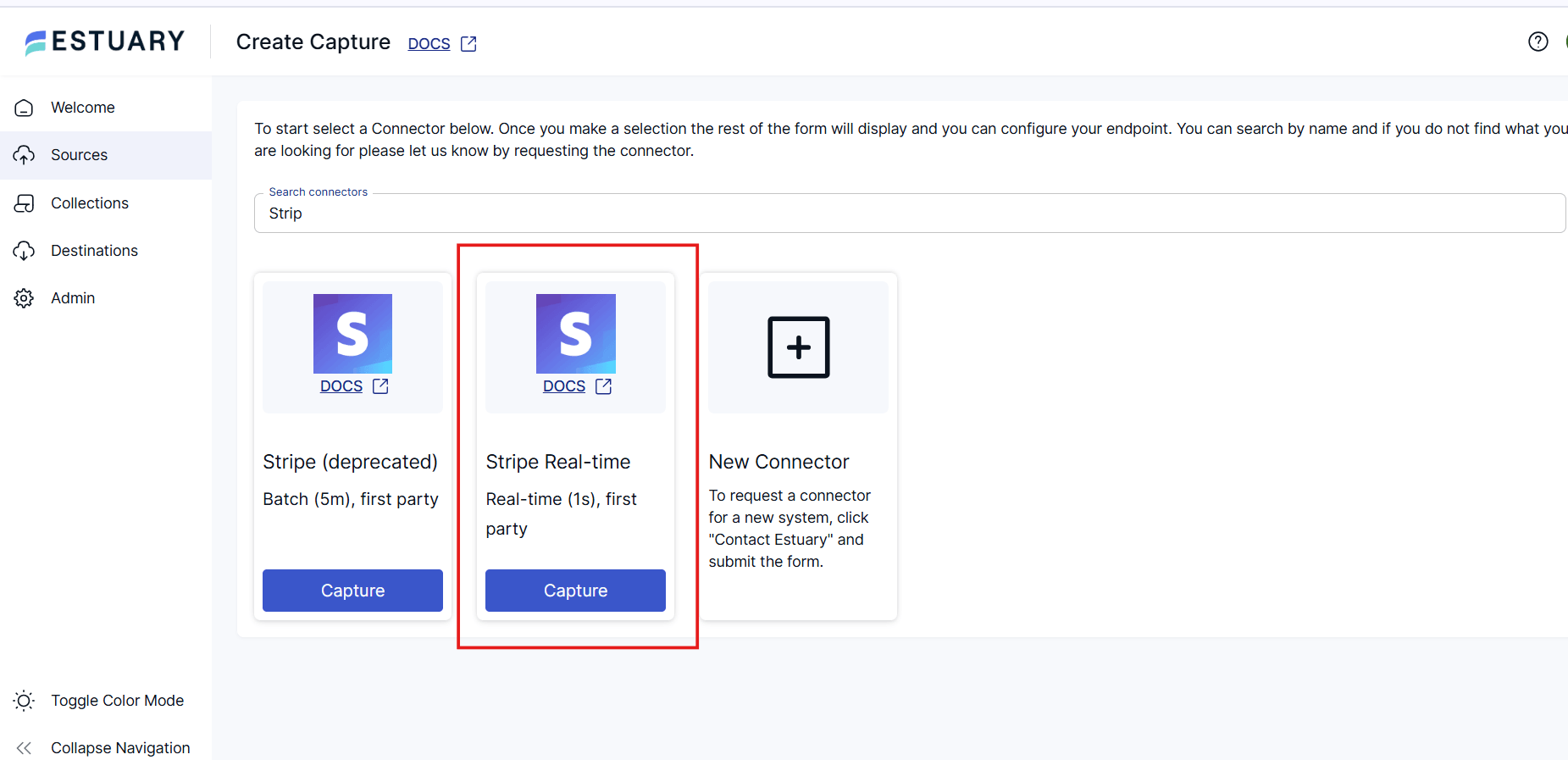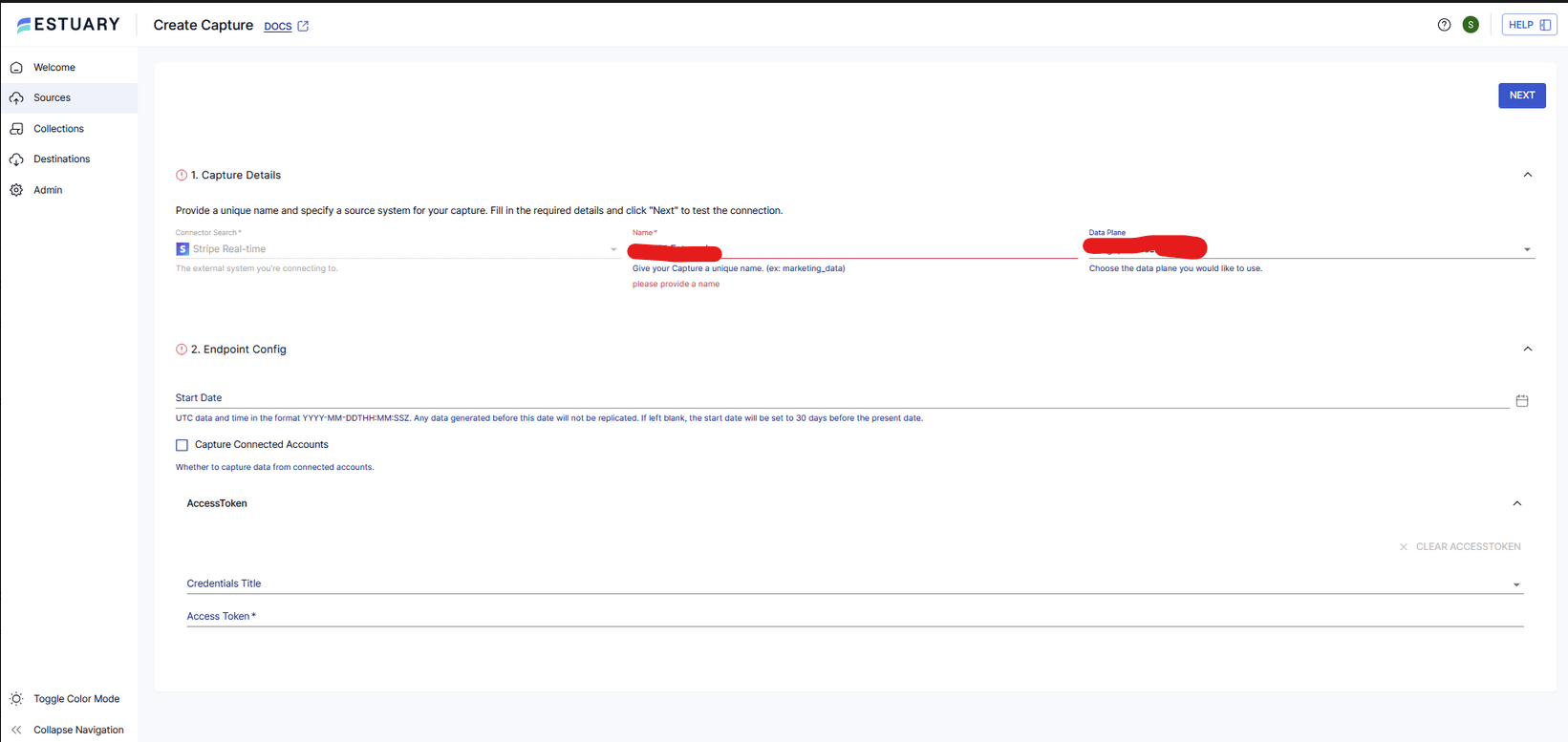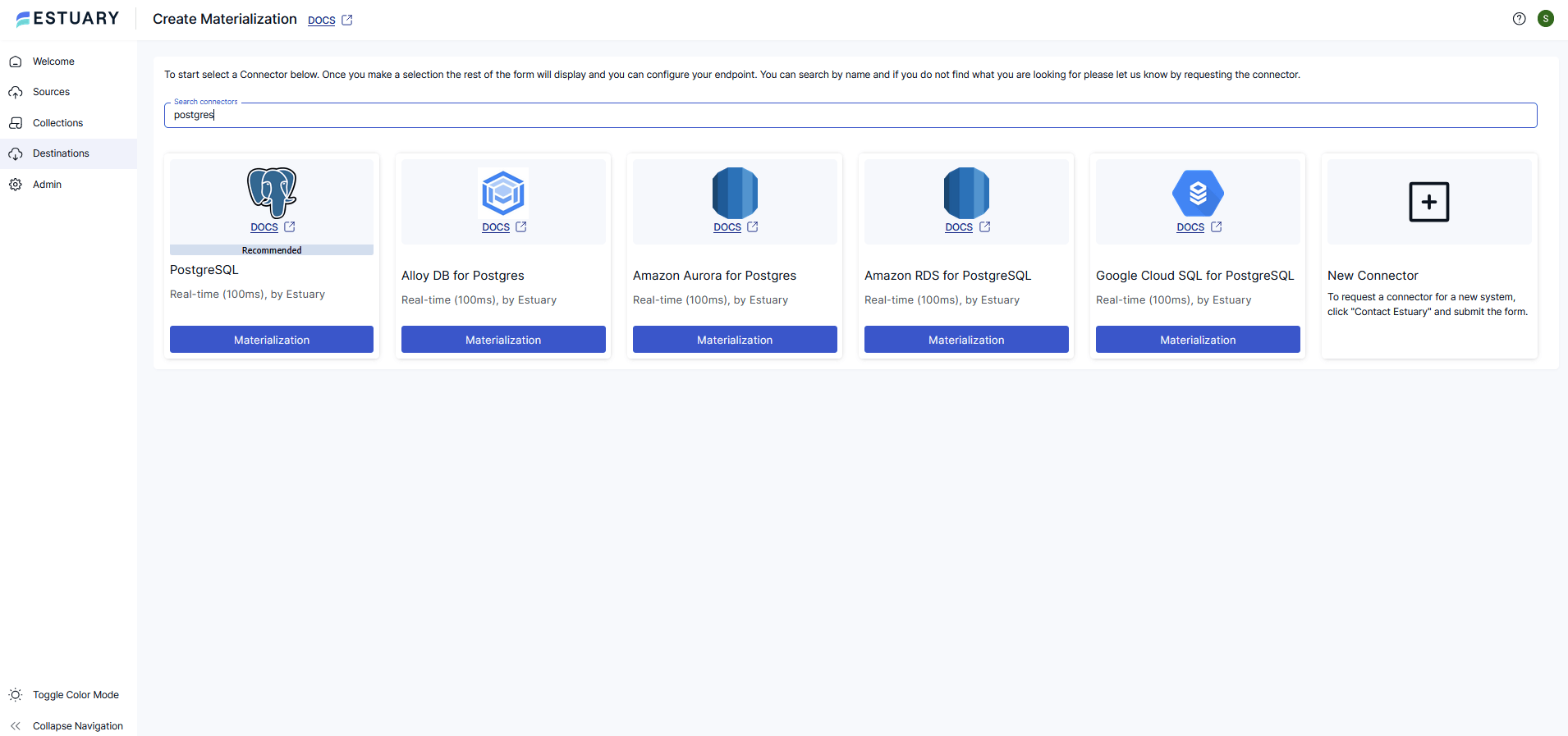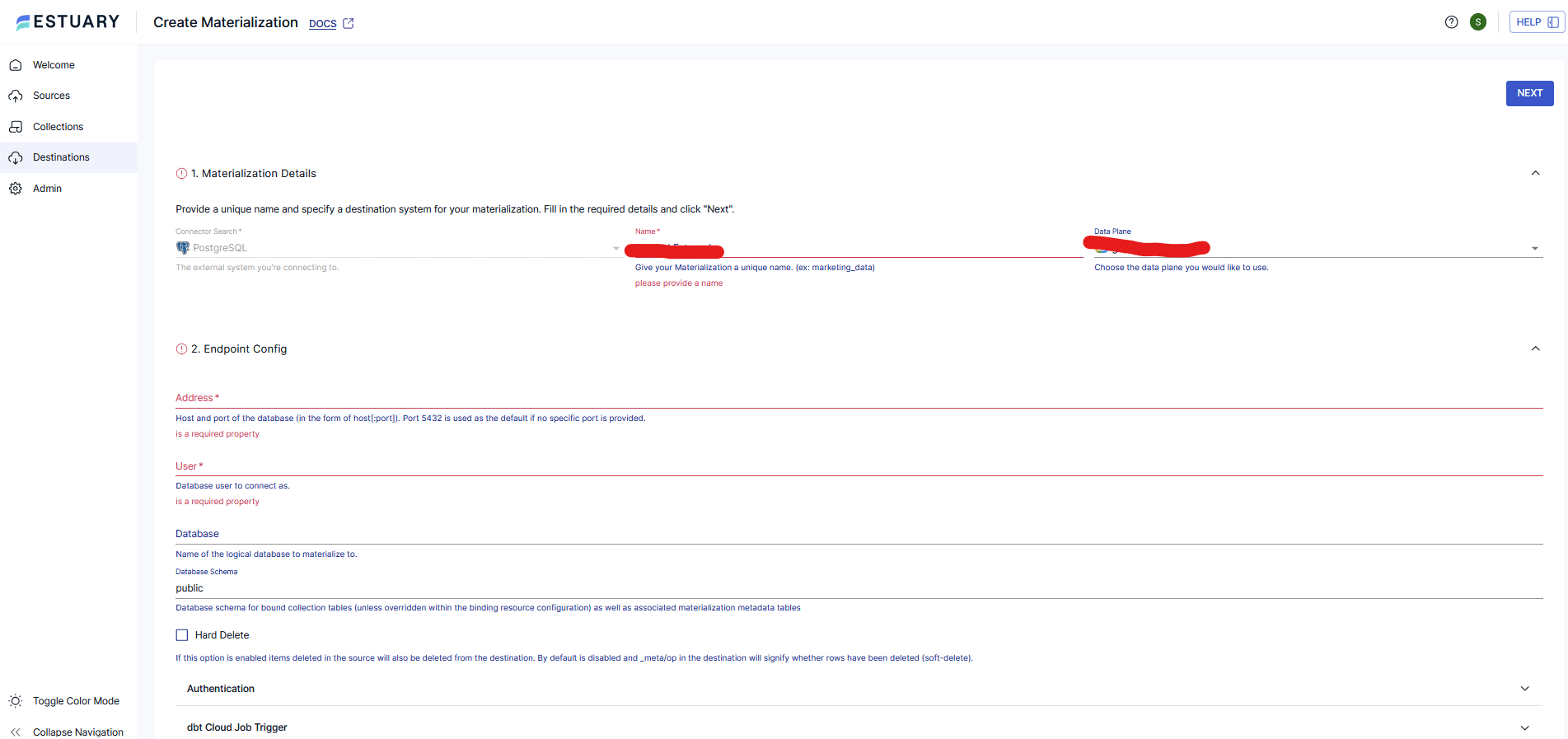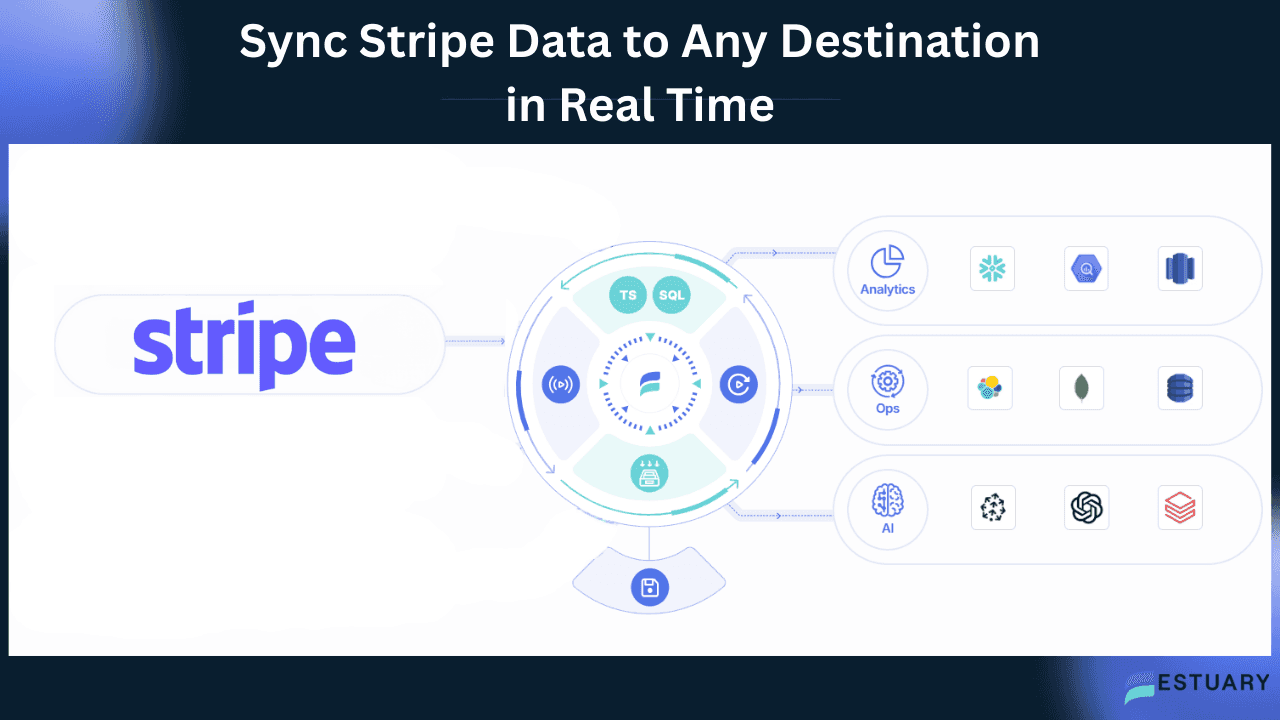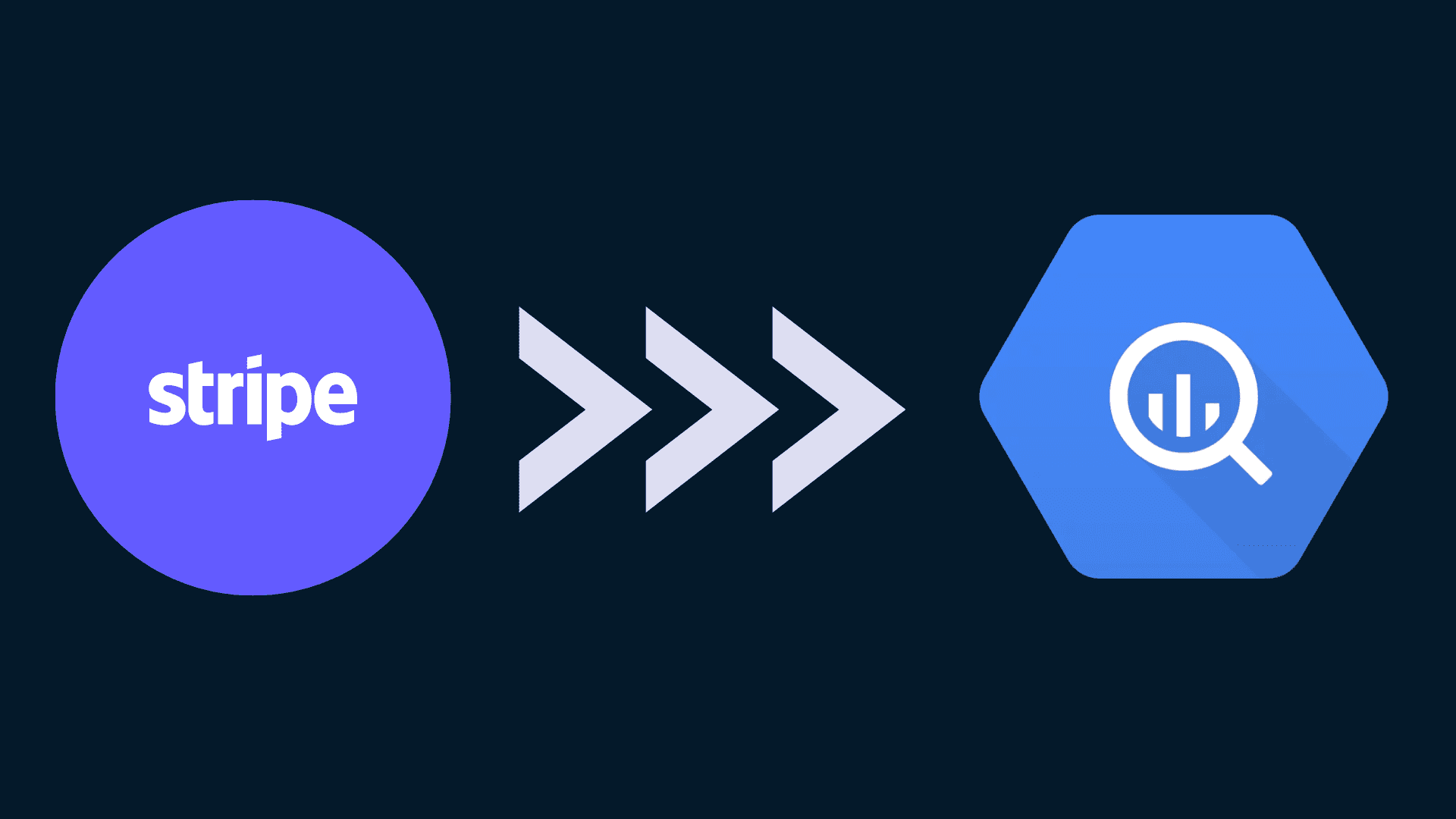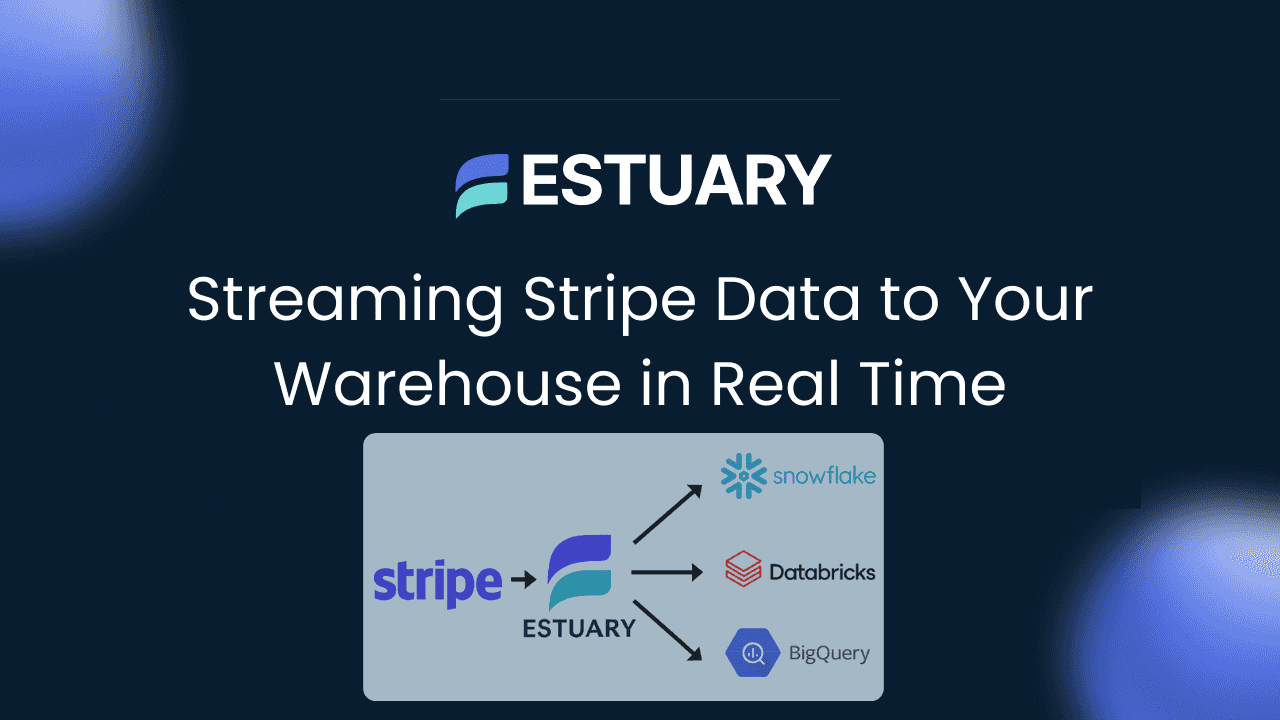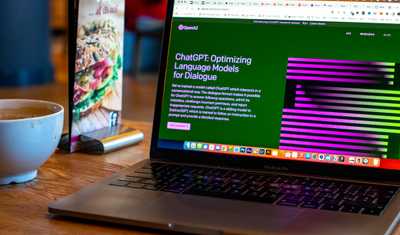
Payments are more than transactions. They are signals of customer behavior, growth trends, and business health. Stripe makes it easy to capture these payments at scale, but the real challenge is turning that raw payment data into something meaningful for your team.
Postgres is where that transformation happens. By moving Stripe data into Postgres, you can connect payments with product data, analyze revenue patterns in real time, and build the kind of financial visibility that drives smarter decisions across the company.
In this guide, we will look at why syncing Stripe with Postgres is so valuable, the approaches teams often take, and how Estuary Flow helps you set up a reliable, real time pipeline without the usual complexity.
Want to try it yourself? Sign up free and see how quickly you can sync Stripe to Postgres.
Key Takeaways
- Syncing Stripe with Postgres unlocks richer insights by combining payment data with the rest of your business data.
- Manual scripts and batch jobs often lead to delays, duplicates, and maintenance headaches.
- Estuary Flow gives you a real-time, no-code Stripe to Postgres integration that is reliable, schema-aware, and secure.
- With exactly-once delivery and built-in monitoring, you can trust your financial data for reporting, analytics, and downstream applications.
- Whether for revenue reporting, fraud detection, or customer analytics, Estuary Flow makes Stripe data instantly available in Postgres.
Why Sync Stripe to Postgres
Stripe does an incredible job of processing payments, but it is not built for deep analytics. If you rely only on Stripe’s dashboards, you can see transactions in isolation but miss the bigger business picture. That bigger picture emerges when Stripe data is combined with the rest of your operational data inside Postgres.
Here are some of the most common reasons teams sync Stripe to Postgres:
- Revenue reporting with real context: Go beyond Stripe’s out-of-the-box metrics by joining payment data with customer accounts, subscription details, or product usage in Postgres. This makes it possible to calculate metrics like monthly recurring revenue, customer lifetime value, or churn risk.
- Customer-level analytics: Payments are only one part of the customer journey. By storing Stripe data in Postgres, you can connect financial activity with product behavior, support tickets, or marketing campaigns. This unified view drives better customer segmentation and more accurate forecasting.
- Real-time financial monitoring: Fraud detection and anomaly detection often require low-latency insights. Having Stripe data flow continuously into Postgres allows analysts and finance teams to spot unusual chargebacks, spikes in failed payments, or sudden drops in revenue as they happen.
- Data as a foundation for AI and reporting tools: Postgres acts as a central hub that can feed BI dashboards or even machine learning models. With Stripe data in Postgres, you can automate financial reporting and run predictive models on revenue trends.
In short, syncing Stripe with Postgres turns raw transactions into actionable intelligence. But the way you move that data matters. Batch uploads and one-off scripts quickly run into limitations, especially when payment data changes constantly. That is why the method you choose is critical and why real-time pipelines with Estuary Flow make the difference.
Methods to Connect Stripe and Postgres
There are many ways to move data from Stripe into Postgres, but not all of them are equal. Each approach comes with trade-offs in speed, reliability, and long-term maintenance.
1. Manual API or Webhook Scripts
Stripe’s APIs and webhooks allow you to capture events and insert them into Postgres with custom code. While this gives full control, it also requires constant upkeep. You need to handle retries, schema changes, and error recovery — all of which become difficult at scale.
2. Batch Uploads and ETL Scripts
Another option is to write scripts or use scheduled jobs that export Stripe data in bulk and load it into Postgres. This works for simple reporting, but the delays can stretch into hours or even days, making it unsuitable for real-time financial monitoring.
3. Third-Party Batch Tools
Some tools can sync Stripe to Postgres on a scheduled basis. They reduce development effort, but they usually operate in batches and may get expensive as data volumes grow.
4. Estuary Flow (Recommended)
With Estuary Flow, Stripe data streams into Postgres in real time. There are no manual scripts to maintain, no batch delays, and no surprise errors when Stripe updates its schema. Flow handles schema enforcement, scaling, and delivery guarantees automatically, giving your team a reliable integration that “just works.”
- Learn more about the Stripe real-time capture connector
- See configuration details for the Postgres materialization connector
How to Sync Stripe to Postgres with Estuary Flow
With Estuary Flow, you can move from raw Stripe events to structured Postgres tables in just a few steps. Here’s the exact process:
Step 1: Create a Stripe Capture
- In the Estuary Flow dashboard, go to the Sources tab and click + New Capture.
- In the connector search, type Stripe and select Stripe Real-time.
- Fill in the Capture Details:
- Name: Enter a unique name (for example: stripe_payments_capture).
- Data Plane: Choose the data plane you want this pipeline to run on.
- Configure the Endpoint:
- Access Token: Paste your Stripe API secret key (sk_live_... for production or sk_test_... for testing).
- Start Date: Optional. Specify a UTC timestamp in YYYY-MM-DDTHH:MM:SSZ. If left blank, Flow defaults to 30 days prior to the present date.
- Capture Connected Accounts: Enable if you want to sync data from connected accounts. Flow will include an account_id field in each record.
- Click Next to validate the connection. Flow will automatically detect Stripe resources such as charges, customers, invoices, and subscriptions.
- Save and publish the capture. Flow will stream historical data (backfill) and then switch to real-time events, storing them as collections.
📌 Reference: Stripe Real-time connector docs
Step 2: Create a Postgres Materialization
- In the Estuary Flow dashboard, go to the Destinations tab and click + New Materialization.
- In the connector search, select PostgreSQL.
- Fill in the Materialization Details:
- Name: Enter a unique name (for example: stripe_to_postgres).
- Data Plane: Choose the same data plane you used in your capture.
- Configure the Endpoint:
- Address: Host and port of your Postgres instance (example: db.mycompany.com:5432). Port 5432 is used by default.
- User: A database user with create table, insert, update, and delete permissions in the target schema.
- Password: Password for the database user.
- Database: The name of your Postgres database.
- Schema: Defaults to public, but you can specify another schema.
- Hard Delete (optional): Enable if you want deletions in Stripe to also remove rows in Postgres. By default, Flow uses soft deletes with a metadata column.
- Select your authentication method:
- User/Password (most common).
- Cloud IAM options are available for AWS IAM, Google Cloud IAM, or Azure IAM, depending on where your Postgres is hosted.
- Under Source Collections, click Link Capture and select the Stripe capture you created in Step 1. Flow will automatically surface Stripe collections and let you bind them to Postgres tables.
- Review the bindings. By default, Flow mirrors schemas so each Stripe collection (such as charges or customers) becomes its own Postgres table.
- Click Save and Publish to deploy the materialization.
📌 Reference: PostgreSQL materialization connector docs
Step 3: Monitor and Verify
- In the Flow dashboard, check the capture and materialization to confirm they are running.
- Collections should start populating in your Postgres database.
- Run a quick query to validate, for example:
plaintextSELECT *
FROM public.charges
ORDER BY created DESC
LIMIT 10;- Estuary Flow enforces exactly-once delivery and schema validation, so you can trust that your Postgres tables always match your Stripe data.
✅ At this point, your pipeline is live: every new charge, invoice, or subscription in Stripe will flow into Postgres in real time.
Ready to follow these steps with your own data? Sign up free and build your first Stripe pipeline in minutes.
Why Estuary Flow is Better than Alternatives
There are many ways to move Stripe data into Postgres, but most of them come with hidden costs. Manual scripts require constant maintenance. Batch jobs create delays that make it impossible to act on data in real time. Traditional ETL tools can get expensive as your transaction volume grows and often struggle to keep up with schema changes from Stripe.
Estuary Flow is built to overcome these challenges:
- Real-time streaming, not delayed batches: Flow captures historical data and then switches to continuous event streaming. Your Postgres database always reflects the latest customer payments, subscriptions, and refunds.
- Schema enforcement and evolution: Stripe’s API evolves over time. New fields appear, and data types can shift. Flow validates every record against a schema and automatically adapts to schema changes, so your pipelines keep running smoothly.
- Exactly-once delivery: Financial data cannot afford duplicates or missing records. Flow uses a transactional materialization protocol to ensure every Stripe event is delivered once and only once into Postgres.
- Unified pipelines without extra tools: Instead of juggling scripts, queues, and monitoring systems, Flow combines capture, storage, transformation, and materialization into one platform. That means fewer moving parts and lower operational overhead.
- Flexible deployment models: Flow works as a fully managed SaaS, a private deployment, or in your own cloud. That makes it suitable for teams with strict compliance or security requirements around sensitive payment data.
With Estuary Flow, Stripe and Postgres work together seamlessly, giving your business the financial visibility it needs without the technical headaches.
Curious how this works in real-world setups? Explore our success stories to see how teams rely on Estuary Flow for payment data pipelines.
Best Practices for Stripe to Postgres Pipelines
Getting a pipeline running is only the first step. To make sure your Stripe to Postgres integration remains reliable and secure as your business grows, keep these best practices in mind:
1. Secure Your Payment Data
Stripe data often contains sensitive financial details. When using Estuary Flow, you can choose deployment options that match your security needs. For sensitive use cases, consider private deployments or bring your own cloud setup. You can also enable secure connectivity with network tunnels or private links to keep data off the public internet.
2. Design Schemas with Analytics in Mind
Think carefully about how Stripe data will be used in Postgres.
- Keep tables like charges, customers, and subscriptions separate to preserve relational structure.
- Add indexes on frequently queried fields such as customer_id or created.
- Use Postgres views to combine data into analyst-friendly tables without duplicating storage.
3. Handle Deletes Correctly
By default, Flow applies soft deletes using metadata fields. For compliance or reporting needs, you can enable Hard Delete in your Postgres materialization so that rows are fully removed when deleted in Stripe. Choose the approach that best fits your audit and reporting requirements.
4. Monitor Pipeline Health
Payment data pipelines should never go unnoticed. Estuary Flow integrates with monitoring tools and exposes metrics so you can track throughput, latency, and error counts. Set up alerts to notify your team if ingestion slows down or fails.
5. Plan for Schema Evolution
Stripe’s API is dynamic, and new fields may appear at any time. With Flow, schema evolution is handled automatically, but it’s still a good practice to regularly review schemas in your Postgres database and update downstream dashboards or queries accordingly.
These practices help ensure your integration is not only live but also resilient, secure, and analytics-ready for the long run.
Estuary Flow automatically handles schema changes and pipeline reliability, so you can focus on analytics instead of maintenance. Contact us to learn how.
Conclusion
Stripe is where payments begin, but Postgres is where they become actionable. By syncing Stripe with Postgres, you give your team a complete, real time view of revenue, customers, and financial health.
Manual scripts and batch-based tools can’t keep up with the pace of modern business. Estuary Flow offers a simpler, faster, and more reliable way to move your Stripe data without the maintenance burden.
Now it’s your turn to put that data to work:
- 🚀 Sign up free and start building your Stripe to Postgres pipeline in minutes.
- 💬 Join our Slack community to connect with other data engineers.
- 📚 Explore customer success stories to see how teams are already using Estuary Flow.
- 📩 Contact us to get tailored help for your use case.
With Estuary Flow, your Stripe data is always available, always accurate, and always real-time.
FAQs
Can I use Stripe webhooks or API scripts to load data into Postgres?
Does Estuary Flow support multiple Stripe accounts syncing into Postgres?
What are common use cases for syncing Stripe to Postgres?

About the author
Dani is a data professional with a rich background in data engineering and real-time data platforms. At Estuary, Daniel focuses on promoting cutting-edge streaming solutions, helping to bridge the gap between technical innovation and developer adoption. With deep expertise in cloud-native and streaming technologies, Dani has successfully supported startups and enterprises in building robust data solutions.

